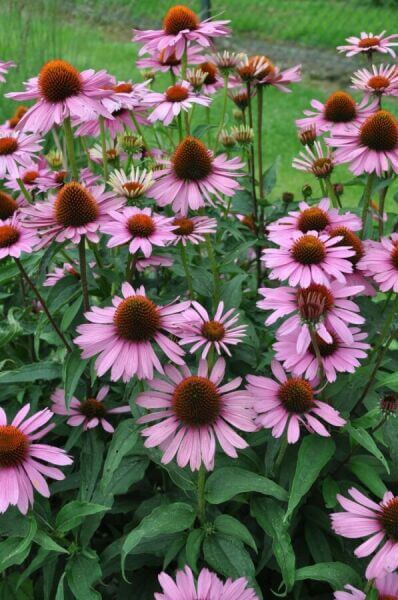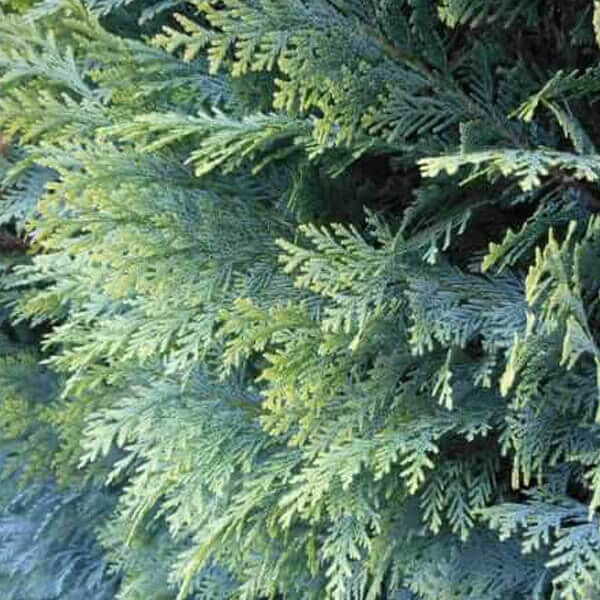Hedge Plants For Winter Interest
Hedge Plants For Winter Interest
Blog Article
Best Hedging Plants For Public Spaces
Enhance your garden's allure with lavish hedge varieties such as Yew (Taxus), Thuja, Laurel, Photinia, and Bamboo, commemorated for their structural integrity and ecological advantages.
Yew and Thuja provide evergreen protection and winter season durability, while Laurel uses rapid development and broad, aromatic leaves.
Photinia adds seasonal appeal with its lively red foliage, and Bamboo provides a low-maintenance, serene atmosphere.
These hedges improve air quality, decrease sound, and develop tranquil, private spaces.
Correct planting, spacing, and maintenance guarantee energetic growth and environmental consistency.
Check out how these lush varieties can raise your garden's appeal and well-being.
Secret Takeaways
Transform Your Garden With Lush Hedge Ranges
- Select Yew for its thick, evergreen development and unrivaled longevity.
- Go with Laurel for its quick development and broad leaves, ensuring quick privacy.
- Select Photinia for its lively seasonal foliage, which turns a striking dark red.
- Utilize Bamboo for a low-maintenance, winter-hardy hedge with aesthetic appeal.
- Space plants 2-3 per meter and prune frequently for optimum growth and health.
Popular Hedge Plants
When changing a garden with rich hedge ranges, it's necessary to think about popular hedge plants such as Yew, Thuja, Laurel, and Photinia due to their unique characteristics and benefits.
Yew (Taxus) is highly respected for its longevity and dense, green development, making it a prime option for enduring landscapes.
Thuja is kept in mind for its evergreen foliage and robust winter season strength.
Photinia includes seasonal vibrancy with red leaves that darken over time, creating dynamic visual appeal.
Laurel offers fast development and aromatic, broad leaves, suitable for quick privacy.
Additionally, Bamboo is an outstanding choice for ambiance, offering a low-maintenance, winter-hardy alternative that boosts the garden's aesthetic with its sophisticated, swaying walking canes.
These choices accommodate a variety of horticultural needs and choices.
Advantages of Garden Hedges
Garden hedges provide a wide variety of benefits, making them a valuable addition to any landscape. These natural barriers are cost-effective to implement and supply considerable wind security, enhancing air blood circulation and adding to noise decrease. The dense foliage of hedges like Thuja and Beech ensures personal privacy by blocking presence, developing a remote and serene environment.
Hedges likewise play a vital role in microclimate regulation, supplying a stable environment that cultivates plant growth and decreases temperature variations. Their complex leaf structures filter pollutants, enhancing air quality and contributing to a much healthier garden ecosystem.
Furthermore, hedges excel in sound reduction, taking in and deflecting acoustic waves to lower ambient noise levels. This double functionality of offering both visual and acoustic personal privacy enhances the general harmony and aesthetic appeal of any garden.
Planting and Upkeep Tips
For an effective hedge, precise preparation of the planting location is crucial. Guarantee the soil has correct pH and drainage to support strong root development.
Area the plants properly for the chosen species. Water the hedge regularly throughout its initial growth stage, changing as required with seasonal changes.
Execute a organized bug control and disease prevention technique, utilizing chemical or organic treatments when required. Routinely check for aphids, termites, and fungal infections.
Apply mulch to retain moisture and suppress weeds. Seasonal pruning promotes dense growth and air flow, necessary for plant health.
Following these standards will help you cultivate a vibrant, well-maintained hedge that improves the charm of your garden.
Spacing and Trimming Guidelines
Spacing and Cutting Standards
Appropriate spacing and cutting are important for cultivating healthy, aesthetically appealing hedges. Appropriate spacing makes sure each plant gets sufficient nutrients, light, and air flow.
Follow these standards for optimal hedge upkeep:
- Spacing: Position hedge plants 2-3 plants per meter to motivate robust growth.
- Pruning Methods: Regular pruning is important for preserving preferred hedge height and shape. Trim new development in summer season and cut down older wood during winter season.
- Seasonal Care: Change trimming schedules and methods according to seasonal requirements to guarantee plant health.
- Hedge Height: Regularly display and cut to maintain the desired hedge height and achieve consistent aesthetic appeals.
Sticking to these actions will ensure your hedge grows, improving both the appeal and performance of your garden.
Selecting the Right Hedge
Picking the Right Hedge
Selecting the suitable hedge involves assessing aspects such as mature height, foliage density, and environmental strength. Successful hedge plant choice needs understanding each species' development characteristics and site-specific versatility.
For instance, Yew (Taxus) uses excellent longevity and thick development, while Thuja is notable for its winter durability. In addition, thinking about maintenance requirements is essential; fast-growing types like Laurel or Privet need routine cutting, whereas low-maintenance alternatives like Bamboo or Ivy might be more suitable for those looking for very little maintenance.
Ecological elements such as soil type, light availability, and moisture conditions should likewise direct the choice process. This mindful approach guarantees the chosen hedges will prosper, supplying both practical and aesthetic advantages to the garden landscape.
Shipment and Planting Guidance
To guarantee your hedge plants prosper, they should be delivered by specialized carriers and planted promptly upon arrival.
Follow these important steps for effective planting:
- Soil Preparation: Enrich the soil with raw material to improve drain and nutrient content.
- Planting Depth: Produce a trench twice the width and equal to the depth of the root ball.
- Watering Methods: Water completely after planting, keeping the soil regularly damp but not saturated.
- Mulching: Apply a layer of mulch to keep moisture and suppress weeds.
Consumer Support and Service
Given the important function of timely help in horticultural pursuits, our customer support group is offered 6 days a week through telephone, e-mail, and social networks to use skilled suggestions and quickly attend to any issues. Their commitment to quick action times ensures customer fulfillment by dealing with inquiries connected to plant health, ideal planting methods, and upkeep schedules.

Reaction Time
Within 24 hours
This detailed support group, reinforced by a stellar 9.3/ 10 consumer rating, highlights our commitment to improving the gardening experience for every customer.
Often Asked Concerns
The Length Of Time Does It Consider Hedge Plants to Develop?
Hedge plants generally require one to three years to become fully established, with the precise duration varying by types and growing conditions.
Reliable care throughout this important duration is necessary for robust development. Constant watering, watchful weed control, and suitable fertilizer application are critical in promoting strong root advancement.
For instance, fast-growing species like Laurel may establish quicker, while slower-growing varieties such as Yew may take longer. Thorough upkeep accelerates the establishment process, leading to healthy and dense hedges.
What Are the Best Hedge Plants for Privacy?
The concern of the finest hedge plants for privacy involves evaluating evergreen and deciduous alternatives.
Evergreen hedges like Thuja, Laurel, and Cypress supply year-round coverage, ensuring constant personal privacy.
In contrast, deciduous hedges such as Beech offer seasonal personal privacy, shedding leaves in chillier months.
Key upkeep ideas for privacy hedges include routine cutting, fertilizing in spring, and appropriate spacing-- usually 2 to 3 plants per meter.
In addition, constant watering and diligent weed elimination are important for promoting healthy, dense development.
Can Hedge Plants Draw In Wildlife to My Garden?
Yes, hedge plants can attract wildlife to your garden by supplying important advantages like shelter, food, and nesting websites, thereby boosting local biodiversity. For circumstances, yew, holly, and laurel are outstanding for attracting birds, while ivy supports a range of insects.
However, it's crucial to note that there are some downsides, such as increased maintenance to handle insects and routine upkeep. Thoroughly selecting and preserving hedge ranges can help stabilize these downsides and advantages, ultimately cultivating a vibrant and sustainable environment in your garden.
Are There Any Flowering Hedge Plants Available?
Yes, there are flowering hedge plants offered that can boost the beauty of your garden.
For example, Elaeagnus, likewise understood as Olive Willow, produces fragrant white flowers in the fall, adding a touch of sophistication.
Photinia, another popular choice, showcases vibrant red leaves that develop into an abundant green, developing a dynamic visual effect throughout the seasons.
To guarantee these plants prosper, it's vital to practice proper pruning methods and seasonal maintenance, such as cutting brand-new development in the summer season and cutting back in the winter.
These measures will help preserve the health and aesthetic appeal of your flowering hedges.
How Do I Avoid Insects in My Hedge Plants?
To avoid insects in hedge plants, use natural bug control techniques and preserve appropriate hedge care. Present helpful pests like ladybugs, which victimize damaging pests, to create a balanced ecosystem.
Regularly inspect your hedges for signs of infestation and quickly eliminate any affected parts to prevent the spread. Ensure the health of your hedges by applying well balanced fertilizers and supplying sufficient water.
Use mulching to keep soil moisture and proper spacing to reduce plant tension and promote robust development. These practices collectively help in minimizing bug concerns and preserving a healthy hedge.
Conclusion
In Additional info essence, selecting the right hedge ranges such as Yew, Thuja, and Laurel can change any garden into a peaceful haven. These plants supply year-round plant, improve aesthetic appeal, and deal practical benefits like sound reduction and wind protection.
Correct planting methods, accurate spacing, constant watering, and seasonal trimming are essential for ideal growth.
Dependable shipment services and professional customer assistance ensure a smooth experience from purchase to planting, making it simpler than ever to raise your outdoor area.
Garden hedges provide a multitude of advantages, making them a valuable addition to any landscape. These natural barriers are cost-efficient to execute and supply considerable wind defense, improving air blood circulation and contributing to noise decrease. The dense foliage of hedges like Thuja and Beech makes sure privacy by blocking visibility, producing a serene and secluded environment.

Pruning Methods: Regular pruning is essential for keeping preferred hedge height and shape. Trim brand-new development in summer and cut back older wood during winter.
Report this page